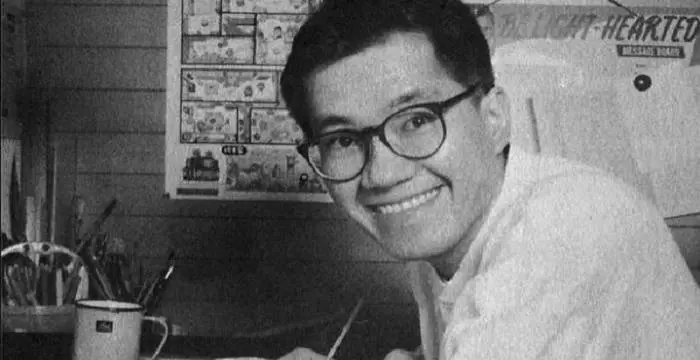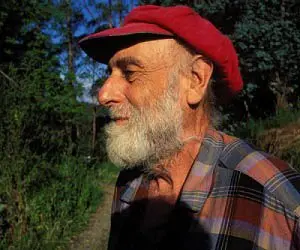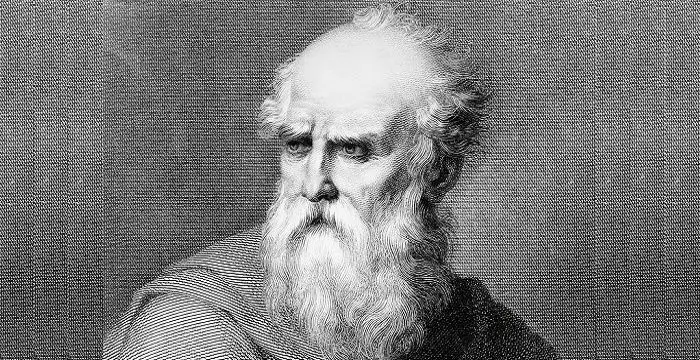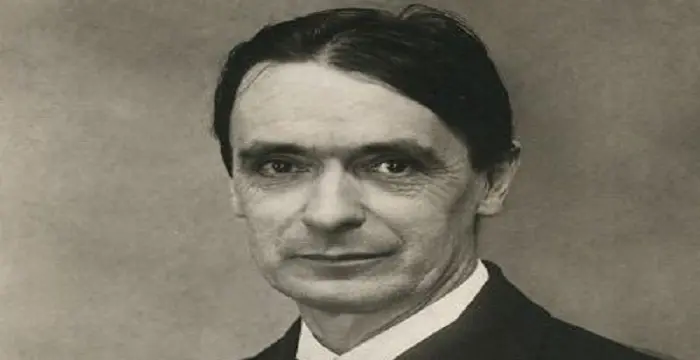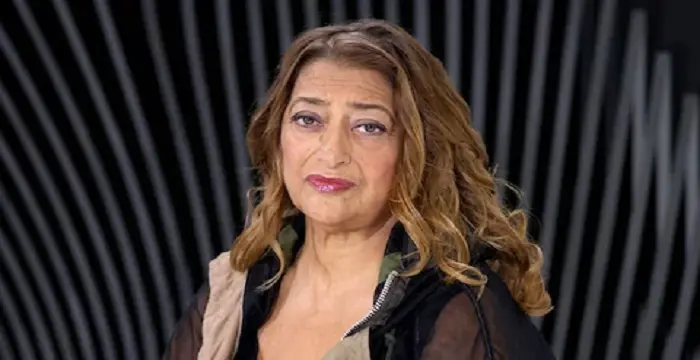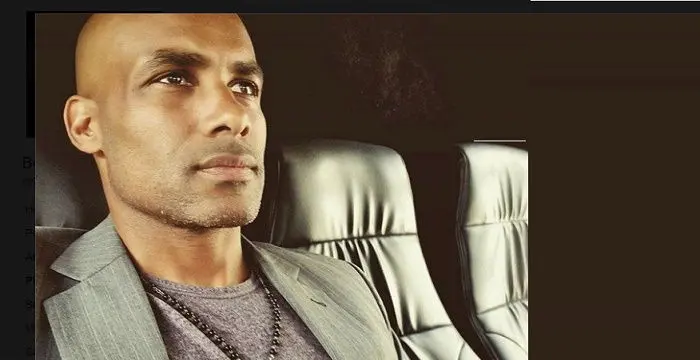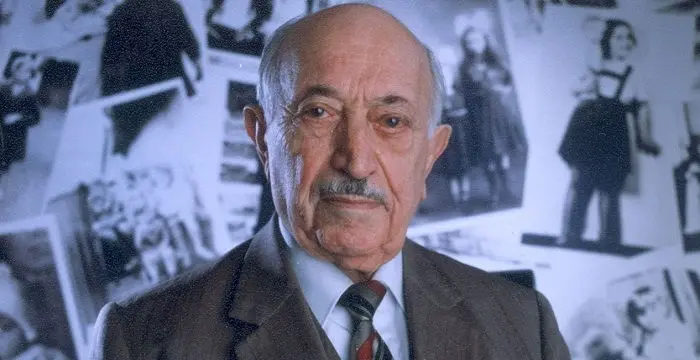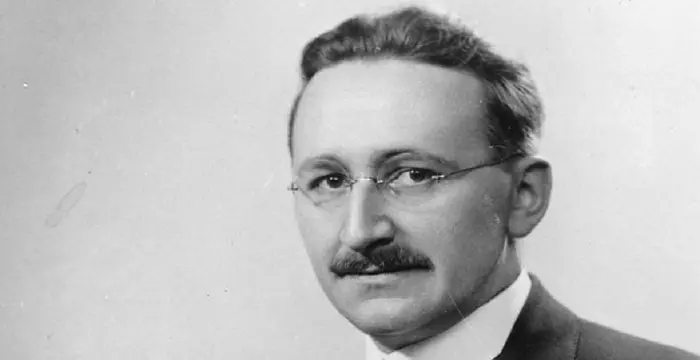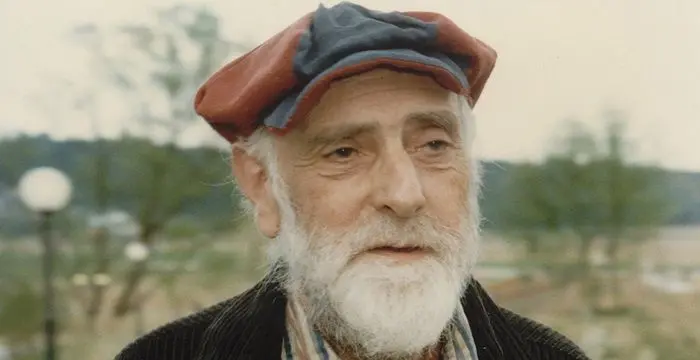
Friedensreich Hundertwasser - Miscellaneous, Family and Facts
Friedensreich Hundertwasser's Personal Details
Friedensreich Hundertwasser was an Austrian artist and architect, known for his vibrant use of color
| Information | Detail |
|---|---|
| Birthday | December 15, 1928 |
| Died on | February 19, 2000 |
| Nationality | Austrian |
| Famous | Architects, Artists, Miscellaneous |
| Spouses | Herta Leitner, Yuko Ikewada |
| Known as | Friedensreich Regentag Dunkelbunt Hundertwasser, Fritz Stowasser, Friedrich Stowasser, Hundertwasser |
| Universities |
|
| Birth Place | Vienna |
| Religion | Judaism |
| Gender | Male |
| Father | Ernst Stowasser |
| Mother | Elsa Stowasser |
| Sun Sign | Sagittarius |
| Born in | Vienna |
| Famous as | Architect |
| Died at Age | 71 |
// Famous Artists
Susan Mikula
Susan Mikula is an American artist and photographer. Check out this biography to know about her childhood, family life, achievements and fun factsabout her life.
Akira Toriyama
Akira Toriyama is a Japanese manga artist. This biography profiles his childhood, family, personal life, achievements, etc.
Bob Ross
Bob Ross was a celebrated, creative American painter and an art instructor. Check out this biography to know about his birthday, childhood, family life, achievements and fun facts about him.
Friedensreich Hundertwasser's photo
Who is Friedensreich Hundertwasser?
Friedensreich Hundertwasser was an Austrian artist and architect, known for his vibrant use of color. His work encompasses colorful paintings, unique sculptures, fascinating edifices and thought provoking exhibits. He was born as Friedrich Stowasser in Vienna and developed an early interest in art. He attended the Academy of Fine Arts in Vienna, signing his works as Hundertwasser, which was a choice throughout his career. He entered the field of architecture, and after residing in Austria and France, he lived modestly in his New Zealand home, which he designed to be environmentally responsible, or 'green.' To expand his horizons, he entered the arena of applied art, designing flags and stamps. Politically, he showed nostalgia for the Imperial period of Austria. He favored constitutional monarchy as an ideal government. In his artistic themes were the factors of individualism, man living in harmony with nature, organic forms, and a hatred of squares. His legacy lives on in his art which bears his stamp of color and innovative design.
// Famous Miscellaneous
Jason Simpson
Jason Simpson is the son of former NFL running back, broadcaster and actor O. J. Simpson. Check out this biography to know about his childhood, family, life, and little known facts about him.
Melissa Brim
Melissa Brim is the ex-girlfriend of former professional boxer Floyd Mayweather Jr. Check out this biography to know about her birthday, childhood, family life, achievements and fun facts about her.
Joyce Meyer
Joyce Meyer is a Christian author and speaker. This biography provides detailed information about her childhood, life, achievements, works & timeline
Childhood & Early Life
He was born as Friedrich Stowasser, on December 15, 1928, in Vienna,to Elsa Stowsser, a Jewish woman, and Earnest Stowasser, a technical civil servant and World War I veteran.
Earnest Stowasser died in 1929, leaving young Friedrich and his mother behind. At the age of seven, Friedrich affinity for art was first detected at the Montessori School of Vienna in 1936.
In 1938, he and his mother were forced to leave their home and move in with his aunt and grandmother. The Nazi annexation of Austria precipitated their departure.
In Nazi-controlled Austria, young Hundertwasser and his mother posed as Christian despite their Jewish heritage. He joined the Hitler Youth in 1941 to mislead Nazi authorities about his Jewish heritage.
After 1945, he attended the Academy of Fine Art in Vienna. It was this academy which denied a young Hitler admission to its classes.
In the academy he began using different sobriquets, such as, Regentag, Dunkelbut, and Hundertwasser to sign his name on art. He continued using these sobriquets throughout his career; though Hundertwasser remained the most prominent one.
Upon leaving the Academy after a few months, he took his artist's tools and traveled to Italy, forming a lifelong friendship with French painter Rene Bro. From their first meeting in 1949, he and Bro traveled together in later years to exotic locales.
In 1952-53 he obtained his first commercial success in Vienna with a show of his paintings.
His paintings featured bright colors such as, blue and red and he projected imagery which idealized the harmony of man with nature, with an infatuation with the spiral motif.
Career
In the early 1950s, he emphasized architecture as his chief artistic expression. From the beginning, he espoused more human touches to living communally, such as the right of tenants to decorate, paint, or even scrape away the masonry in their homes.
In 1958 at a professional event, he read aloud his manifesto on rejecting straight lines and traditional architectural design. From proposing his ideas on architecture in demonstrations or public speeches, he evolved to more strident means of spreading his ideas on the human condition.
In 1967 he lectured, in the nude, regarding what eventually became his famous skins theory. The theory maintained that humans have three skins: epidermis, clothing, and house.
In 1972, his skins theory added the social environment, and the planetary skin. These last two skins acknowledged influences beyond the individual, a maturing of Hundertwasser's philosophy.
In the early 1980s, he became an 'architect doctor,' remodeling a factory and grain silo. He implemented growing vegetation on rooftops and uneven floors..
1999 saw the beginning of his last project in Magdeburg, Germany; the project was unfinished at the time of his death and was finished years later.
Major Works
He bought extensive property in New Zealand in the 1970's, including portions of the Kaurinui valley. His famous Bottle House there exemplified his belief of self-sufficiency, using solar panels, water wheel, water purification plan, and grass roofs.
In 1983, he designed the Koru Flag for New Zealand, in response to sentiments that the current New Zealand flag represents British imperialism. The design incorporates his favorite spiral motif, with a black stripe on the left, with a green spiral representing a Maori pattern known as the koru. The corresponding white spiral alludes to the Maori name for New Zealand.
Vienna's Hundertwasser House, completed in 1985, represents his work in partnership with architect Joseph Krawina. The expressionist building houses 52 apartments, four offices, three communal terraces and 16 private terraces, with 250 trees and bushes integrated into the structure, making it one of Vienna's most visited places.
Awards & Achievements
In 1959, he received the Sanbra Prize at the 5th São Paulo Biennale.
In 1961, he received the Mainichi Prize at the 6th International Art Exhibition in Tokyo.
He was awarded the Golden Medal of Honour in Vienna and the Golden Medal of Honour of the Austrian state of Styria in 1988. Thanks to his architectural efforts, tourism grew.
In 1998 he was honored with the VDRJ-Prize in Berlin for his unique promotion of Germany as a tourist destination.
Personal Life & Legacy
He married Herta Leitner in 1958, divorcing in 1960. In 1962 he married again, to the Japanese artist Yuko Ikewada, ending his marriage in 1966.
He died on February 19, 2000, at sea, aboard a cruise ship that departed from Auckland, New Zealand.
The Hundertwasser House in Vienna is named after him as he was its major designer. The landmark is a major tourist attraction.
The Hundertwasser Foundation was created to sponsor creative activity. Its focus is particularly in the field of painting, ecology, and architecture.
Trivia
He designed the Kawakawa Hundertwasser Toilet Block. The outside and inside designs are typical, with spirals and reused materials such as glass bricks.
His name means 'Peace-Realm Hundred-Water.'
// Famous Architects
Vitruvius
Vitruvius was a Roman architect, author, and military engineer during the 1st century BC. Check out this biography to know about his childhood, family life, achievements and fun facts about his life.
Rudolf Steiner
Rudolf Steiner introduced groundbreaking ideas in realms of spirituality, art, education and agriculture. Check out this biography to know about his childhood, family life, achievements and other facts related to his life.
Zaha Hadid
The famous Iraqi-British architect Zaha Hadid is known for her designs of the ‘Rosenthal Center for Contemporary Art’ and ‘Heydar Aliyev Center’. To know more about her childhood, profile, career and timeline read on.
Friedensreich Hundertwasser biography timelines
- // 19th Feb 200He died on February 19, 2000, at sea, aboard a cruise ship that departed from Auckland, New Zealand.
- // 15th Dec 1928He was born as Friedrich Stowasser, on December 15, 1928, in Vienna,to Elsa Stowsser, a Jewish woman, and Earnest Stowasser, a technical civil servant and World War I veteran.
- // 1929 To 1936Earnest Stowasser died in 1929, leaving young Friedrich and his mother behind. At the age of seven, Friedrich affinity for art was first detected at the Montessori School of Vienna in 1936.
- // 1938In 1938, he and his mother were forced to leave their home and move in with his aunt and grandmother. The Nazi annexation of Austria precipitated their departure.
- // 1941In Nazi-controlled Austria, young Hundertwasser and his mother posed as Christian despite their Jewish heritage. He joined the Hitler Youth in 1941 to mislead Nazi authorities about his Jewish heritage.
- // 1945After 1945, he attended the Academy of Fine Art in Vienna. It was this academy which denied a young Hitler admission to its classes.
- // 1949Upon leaving the Academy after a few months, he took his artist's tools and traveled to Italy, forming a lifelong friendship with French painter Rene Bro. From their first meeting in 1949, he and Bro traveled together in later years to exotic locales.
- // 1952In 1952-53 he obtained his first commercial success in Vienna with a show of his paintings.
- // 1958In 1958 at a professional event, he read aloud his manifesto on rejecting straight lines and traditional architectural design. From proposing his ideas on architecture in demonstrations or public speeches, he evolved to more strident means of spreading his ideas on the human condition.
- // 1959In 1959, he received the Sanbra Prize at the 5th São Paulo Biennale.
- // 1961In 1961, he received the Mainichi Prize at the 6th International Art Exhibition in Tokyo.
- // 1967In 1967 he lectured, in the nude, regarding what eventually became his famous skins theory. The theory maintained that humans have three skins: epidermis, clothing, and house.
- // 1970He bought extensive property in New Zealand in the 1970's, including portions of the Kaurinui valley. His famous Bottle House there exemplified his belief of self-sufficiency, using solar panels, water wheel, water purification plan, and grass roofs.
- // 1972In 1972, his skins theory added the social environment, and the planetary skin. These last two skins acknowledged influences beyond the individual, a maturing of Hundertwasser's philosophy.
- // 1983In 1983, he designed the Koru Flag for New Zealand, in response to sentiments that the current New Zealand flag represents British imperialism. The design incorporates his favorite spiral motif, with a black stripe on the left, with a green spiral representing a Maori pattern known as the koru. The corresponding white spiral alludes to the Maori name for New Zealand.
- // 1985Vienna's Hundertwasser House, completed in 1985, represents his work in partnership with architect Joseph Krawina. The expressionist building houses 52 apartments, four offices, three communal terraces and 16 private terraces, with 250 trees and bushes integrated into the structure, making it one of Vienna's most visited places.
- // 1988He was awarded the Golden Medal of Honour in Vienna and the Golden Medal of Honour of the Austrian state of Styria in 1988. Thanks to his architectural efforts, tourism grew.
- // 1998In 1998 he was honored with the VDRJ-Prize in Berlin for his unique promotion of Germany as a tourist destination.
- // 19991999 saw the beginning of his last project in Magdeburg, Germany; the project was unfinished at the time of his death and was finished years later.
// Famous Austrian peoples
Martin Buber
One of the greatest philosophers to have ever walked on earth, Martin Buber contributions to philosophy is a long-standing one. Explore all about his profile, childhood, life and timeline here.
Boris Kodjoe
Boris Kodjoe is a German-Ghanaian actor from Austria. Check out this biography to know about his childhood, family life, achievements and fun facts about him.
Simon Wiesenthal
Simon Wiesenthal was an Austrian writer and a famous Nazi hunter. This biography gives detailed information about his childhood, life, works, and timeline.
Friedrich von Hayek
Friedrich von Hayek was a Nobel Prize winning Austrian-British economist and philosopher, best known for his defense of classical liberalism. Check out this biography to know about his childhood, family life and achievements.
Walter Kohn
Nobel Laureate Walter Kohn was an Austrian-born American theoretical chemist and physicist. Check out this biography to know about his childhood, life, achievements, works & timeline.
Reina Triendl
Reina Triendl is a Japanese fashion model, actor, and tarento. Explore more about her childhood, family, personal life, career, etc.
Friedensreich Hundertwasser's FAQ
What is Friedensreich Hundertwasser birthday?
Friedensreich Hundertwasser was born at 1928-12-15
When was Friedensreich Hundertwasser died?
Friedensreich Hundertwasser was died at 2000-02-19
Where was Friedensreich Hundertwasser died?
Friedensreich Hundertwasser was died in Pacific Ocean
Which age was Friedensreich Hundertwasser died?
Friedensreich Hundertwasser was died at age 71
Where is Friedensreich Hundertwasser's birth place?
Friedensreich Hundertwasser was born in Vienna
What is Friedensreich Hundertwasser nationalities?
Friedensreich Hundertwasser's nationalities is Austrian
Who is Friedensreich Hundertwasser spouses?
Friedensreich Hundertwasser's spouses is Herta Leitner, Yuko Ikewada
What was Friedensreich Hundertwasser universities?
Friedensreich Hundertwasser studied at Academy of Fine Arts Vienna
What is Friedensreich Hundertwasser's religion?
Friedensreich Hundertwasser's religion is Judaism
Who is Friedensreich Hundertwasser's father?
Friedensreich Hundertwasser's father is Ernst Stowasser
Who is Friedensreich Hundertwasser's mother?
Friedensreich Hundertwasser's mother is Elsa Stowasser
What is Friedensreich Hundertwasser's sun sign?
Friedensreich Hundertwasser is Sagittarius
How famous is Friedensreich Hundertwasser?
Friedensreich Hundertwasser is famouse as Architect

